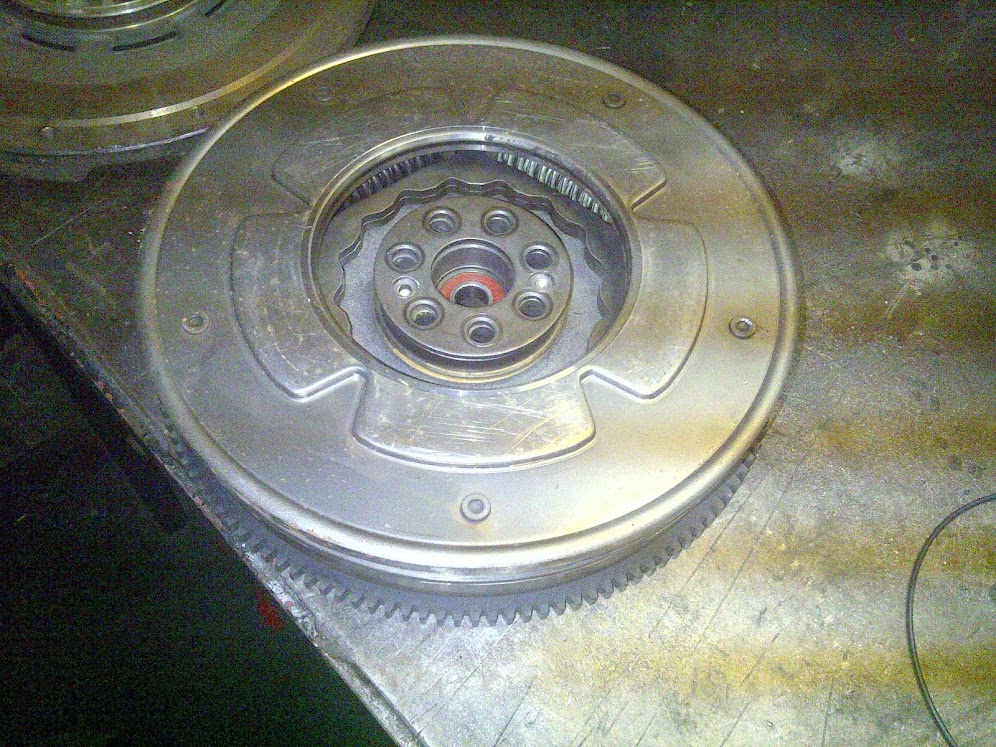The flywheel:

Second Mass part of flywheel (the part incorporating the surface where the clutch friction plate acts on) removed:

The second mass engages on the teeth that can be seen on the inner ring.
Cover of hydraulic dual mass system removed and turned over:

Under the cover: Damper springs with plastic guides:

Hydraulic compartment covers removed (they are made out of some kind of plastic and were perished and cracked):

The plastic pistons can be seen.

Plastic pistons on inner ring:

The hydraulic damping works similarly to what a shock absorber works, except that this unit contains a special fluid similar to what is found in a viscous coupling. When the two masses of the flywheel attempt to rotate relative to one another, the fluid is forced through passages from one compartment to another and this generates the damping force.
My theory on why this unit failed, admittedly based on an incomplete understanding of the intricacies of the thing is as followd:
The whole unit has seals to keep the fluid inside and these failed on this unit, leading to the loss of the fluid and the damping functionality. This possibly overloaded the damper springs and lead to them sagging, which lead to excessive play in the unit and juddering under certain driving conditions.
I think the following can be deduced:
1) The unit is much thicker than a solid flywheel, so it is unlikely that a solid flywheel from a 4M40 motor will work as a replacement, but a solid flywheel could be made that will work. (the clutch plate has springs, so load spikes can still be absorbed, but the damping will be lost).
2) The unit is unlikely to fail in such a manner as to immobilise the vehicle very quickly. I think it could soldier on for possibly tens of thousands of km once the juddering starts, but this might not be the best for the rest of the drivetrain in the long run.
3) It should be possible to devise a way of replacing the springs in this unit with solid slugs to render it a single mass flywheel.

